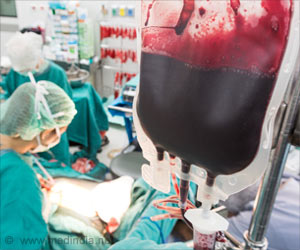A new study believes that a repeat surgery for peritonitis (severe intra-abdominal inflammation or infection) may have some benefit
A new study believes that a repeat surgery for peritonitis (severe intra-abdominal inflammation or infection) may have some benefit when clinical improvement is deficient as compared to having the repeat process usually scheduled after the operation.
In cases of secondary peritonitis (inflammation involving the tissue that lines the abdominal wall and covers the intra-abdominal organs) there is usually a high death rate (20 percent-60 percent), long hospital stays, and high rate of illness due to the development of sepsis with multiple organ failure.It is also seen that almost 12-16% of patients undergoing elective abdominal surgery develop postoperative peritonitis. The author says that “Health care utilization due to secondary peritonitis is extensive, with operations to eliminate the source of infection (laparotomy [surgery involving the intra-abdominal contents]) and multidisciplinary care in the intensive care unit setting.”
The researchers add that after the initial (emergency) laparotomy, relaparotomy may be necessary to eliminate persistent peritonitis or new infections.
“There are 2 widely used relaparotomy strategies: relaparotomy when the patient’s condition demands it (‘on-demand’) and planned relaparotomy. … In the planned strategy, a relaparotomy is performed every 36 to 48 hours for inspection, drainage, and peritoneal lavage [flushing out] of the abdominal cavity until findings are negative for ongoing peritonitis.”
Oddeke van Ruler, M.D., of the Academic Medical Center, Amsterdam, and colleagues conducted a randomized trial comparing the on-demand strategy with the planned relaparotomy strategy following initial emergency surgery for patients with severe secondary peritonitis. The clinical trial was conducted at two academic and five regional teaching hospitals in the Netherlands from November 2001 through February 2005. A total of 232 patients (116 on-demand and 116 planned) were included.
The researchers found that there was no significant difference in primary end point (death and/or peritonitis-related illness within a 12-month follow-up period; 57 percent on-demand vs. 65 percent planned) or in death alone (29 percent on-demand vs. 36 percent planned) or illness alone (40 percent on-demand vs. 44 percent planned).
Advertisement
Patients in the on-demand group had shorter median (midpoint) intensive care unit stays (7 vs. 11 days) and shorter median hospital stays (27 vs. 35 days). Direct medical costs per patient were reduced by 23 percent using the on-demand strategy.
Advertisement
“Despite a lack of statistically significant improvement in primary clinical outcome, these substantial reductions in health care utilization and costs with the on-demand strategy suggest that it may be the preferred strategy.”
Source-Eurekalert
BIN/J







